Too Much Love for the Fish Everyone Hates
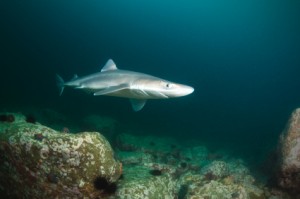
The much-maligned, misunderstood and now treasured “trash fish,” the spiny dogfish (Squalus acanthius). Photo: © Boris Pamikov
It was a sadly typical meeting of the Board of Collier County (Florida) Commissioners in the late nineties. As the meeting droned on, I tuned it out and fell into deep concentration, obsessively rewriting now long-forgotten remarks I would deliver to the Commission about conservation in Southwest Florida on behalf of The Conservancy of Southwest Florida where I was president and CEO. Our environmental policy director, Michael Simonik, suddenly elbowed me, “Can you believe this?” he gasped. As I looked up, Commissioner Barbara Berry was on her soapbox delivering a monologue, and like Michael, I was stunned to hear what she was saying. She soared into hyperbole to sing the praises of the land developers, declaring Southwest Florida far better than when she arrived, and with a look of disgust tinged with horror, told us how awful it was before the developers came, with all of these unsightly “tangles” of trees and messy vegetation. Nature run amok. Thank god the developers came along and made Southwest Florida a better place, with the neatly manicured lawns of its gated communities (not to mention highest number of golf courses per capita in the world). But as I gazed around the room, there were heads nodding. And I learned something.
Part of the story is, of course, that we’re forgetting what nature is supposed to look like, and with each generation spending less and less time outside and in true nature settings, we’re less comfortable with nature. We see “tangles” of vegetation as ugly and threatening as compared to the carefully-controlled outdoor environments we’ve engineered for ourselves in suburbia.
But there’s something else, too. We humans like things that are beautiful. And those of us who care about this planet tend to gravitate toward those of Mother Nature’s creations that take our breath away or perhaps embody the adorable: Dolphins, pandas, sea otters, white tigers, chimpanzees, and even the occasional reptile, like the sea turtle. In land and ocean conservation, we tend to protect the unique and spectacular…and often the beautiful. It’s much harder to protect the ordinary, the drab and especially, the ugly. And yet it’s the ordinary that makes the spectacular possible. Those vast areas of “tangled” trees and vegetation are home to the spectacular Florida panther, and its the loss of its habitat that is directly responsible for its drop in numbers to just a few dozen today. If you love coral reefs, you need to love muddy seagrass beds that lie around them and the Cassiopeia jellyfish they harbor, which, if you disturb them, will release their stinging cells into the water and sting your armpits and crotch. Yes, you have to love them anyway. It’s not enough to protect the spectacular. We have to protect their life support systems, too, and that means respecting the jobs that other critters in the ecosystem, however ugly, have to do to make it all work.
And that brings me to spiny dogfish. I remember attending a New England Fishery Council meeting around 10 years ago with colleague, Sonja Fordham, now president of Shark Advocates International (SAI). I can remember the dumbfounded look on the faces of many of the council members and audience members, who just couldn’t believe that someone would spend so much time advocating for the spiny dogfish, a small shark that was considered a menace, a “trash fish,” and, of course, ugly. Ten years later, Sonja is still advocating for the spiny dogfish along with other unsung ugly ducklings of the sea, including skates and rays, with names like the thorny skate and the barndoor skate (’cause it’s as big as a barn door, of course).
So when I received a Statement of Concern this morning from SAI indicating that the Marine Stewardship Council (MSC) had just “certified as ‘sustainable’ U.S. federal and state (Maine, New Hampshire, Massachusetts, Rhode Island, New Jersey, Virginia, and North Carolina) longline, gillnet, and trawl fisheries taking spiny dogfish off the Northeast United States” it got my attention. You may have seen MSC certification labels in places like Whole Foods and other retailers that offer sustainable choices to their customers. Many of us rely on these labels when we shop, so they need to get it right. Based on SAI’s missive, I believe MSC got it dead wrong.
This issue generated so much heatburn that I decided to dust off an article I wrote about dogfish in 2001 when Sonja and I were both at Ocean Conservancy (then the Center for Marine Conservation, CMC). This is a lightly-edited version of the first installment (summer 2001) of my “Ocean Reflections” column that appeared in CMC’s “Blue Planet Quarterly”:
The first fish I ever caught was a dogfish. I was eight when I took my first deep-sea fishing trip with my father off the coast of Cape May, New Jersey. After I reeled in my catch, the first mate grabbed it by the tail, ripped it from the hook, and mercilessly beat the dogfish to death against the side of the boat. Dropping its lifeless body into the water, the mate proudly proclaimed he had just saved mankind from a baby shark that would have become an enormous man-eater. As I watched it slowly sink below the surface, an old fisherman offered solace,”Don’t worry, kid. It’s just a trash fish.”
In reality, the poor dogfish died needlessly. The mate was correct when he said that the spiny dogfish is a shark. However, dogfish only reach a length of about four feet and vastly prefer fish, mollusks, and crustaceans to human flesh — hardly man-eaters. Prevalent along the U.S. east coast, they are also found around the world, including both sides of the Atlantic
Along with dozens of sharks, rays, and fish, dogfish are still referred to in fishermen’s parlance as “trash fish,” unworthy of our dinner plate. Yet even though the dogfish is the shark no one wants, we have still managed to catch it by the truckload. In the glory days of the New England groundfishery, the same nets that overflowed boats’ holds with cod, haddock, and flounder also caught great numbers of dogfish. They were discarded, officially considered bycatch.
But being a trash fish was only the beginning of the dogfish’s problems. As the traditional groundfish fishery began to decline from overfishing, fishermen and politicians teamed up to promote dogfish as an alternative. The Massachusetts Governor’s Seafood Task Force included dogfish on its list of “underutilized” species and the previously unappetizing “dogfish”was given a makeover, renamed the more appealing “Cape Shark,” and sent on a national tour.
Ironically, its elevated stature in society as an “underutilized resource” proved far more lethal to the dogfish than its lowly standing as trash fish. Europe learned this the hard way when its dogfish stocks were devastated to supply the “fish” in England’s famous fish and chips. Instead of rebuilding their dogfish populations, Europeans became interested in ours. U.S. landings of dogfish skyrocketed five fold since the 1980s and the overfished Northwest Atlantic stock of dogfish will require decades to recover.
Part of the problem is that as sharks, dogfish are very slow to sexually mature; they don’t begin to reproduce until they are 13 years old. Their two-year gestation period is among the longest of all vertebrates, and even then they give birth to an average of only six live pups,compared to the hundreds of eggs/larvae that other fish species produce. To make matters worse, the commercial fishery targets mature females.
Dogfish fishing in the northeastern United States has been unregulated, even as fishing pressure increased. Even the most rudimentary conservation measures were stalled until last year, when a federal rebuilding plan for this fishery was enacted. Emergency action has closed Atlantic state waters to dogfishing since late 2000. This protection is at risk as states consider permanent management that could undermine the federal plan. As the top dogfishing state, Massachusetts has been relentless in its attempts to weaken federal and regional dogfish protection. Last year, it established a quota nearly twice that for the entire Atlantic Exclusive Economic Zone; landings in the state exceeded the federal limit by nearly ten times! As a result, Massachusetts directly contributed to the 2000 federal dogfish quota being exceeded by several million pounds.
Unfortunately, the dogfish are not alone in their predicament. The United Nations reports that nearly 75 percent of the world’s commercial fisheries are fully exploited, overexploited, or at the risk of collapse. What was once trash has become treasure as fishermen increasingly turn toward previously unfished species to fill their empty nets.
Sadly, it is a tremendous challenge to generate public interest in protecting vulnerable but non-charismatic animals like these. Most of us are probably not inclined to see the beauty of a spiny dog fish. But true conservation is every bit as much about protecting the ordinary and the ugly as it is protecting the spectacular and the beautiful. That’s what makes efforts to protect ocean wilderness so important. Protecting expanses of ocean protects all of its inhabitants, and in turn, a flourishing ecosystem. In addition to the creatures we humans cherish, ocean wilderness is also a place where even the misunderstood dogfish and their fellow trash fish can find sanctuary and play their unique part in the sea.
What’s happened in the 11 years since I wrote the article? According to SAI’s Statement of Concern, “In the 1990s, serious overfishing of mature female spiny dogfish off the Northeast U.S. led to nearly a decade of recruitment failure (exceptionally low pup production) from which negative effects still persist. Since 2008, the U.S. Atlantic spiny dogfish quota has been increased from 4 million pounds to more than 35 million pounds. The population remains in a precarious state and is predicted to decline in the near future to well below target levels.” This hardly sounds like a candidate for sustainable certification.
Please download the SAI Statement of Concern below and take action to protect the spiny dogfish. And take a moment to look around and enjoy some of the tangled trees and vegetation in your neighborhood. Chances are they’re home to some appreciative wildlife…some of them spectacular, some of them not.

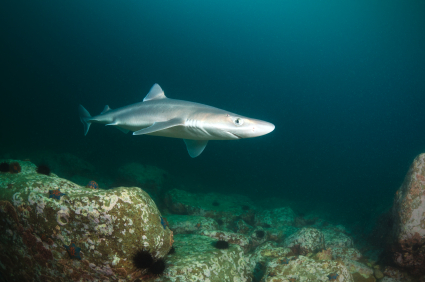

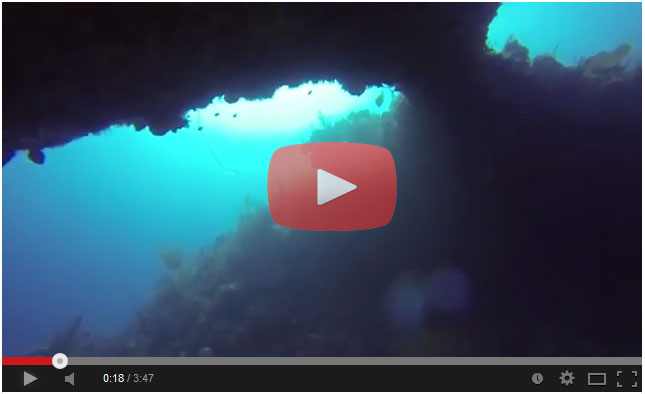

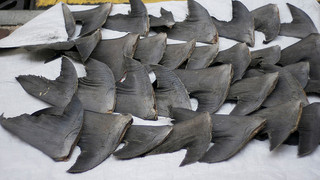
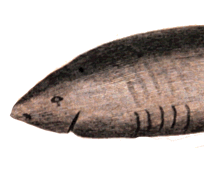



Leave a Reply
Want to join the discussion?Feel free to contribute!